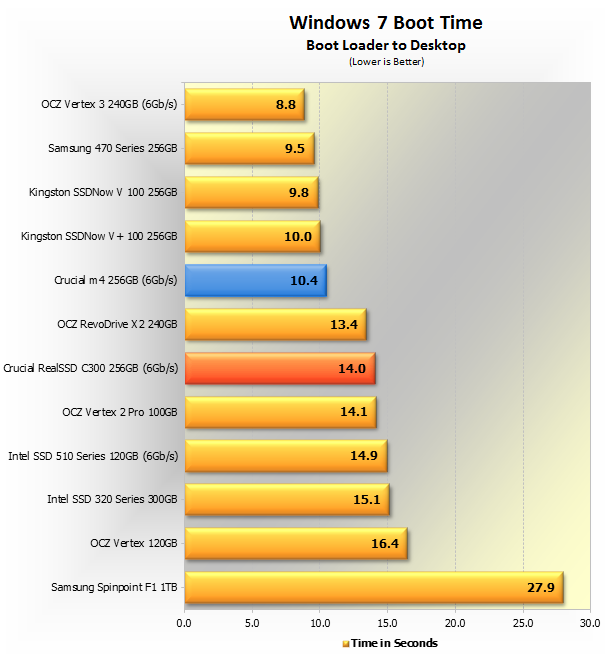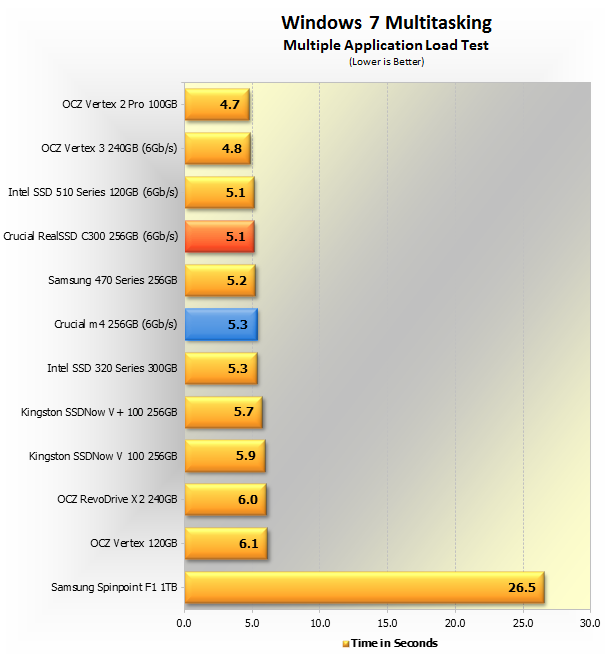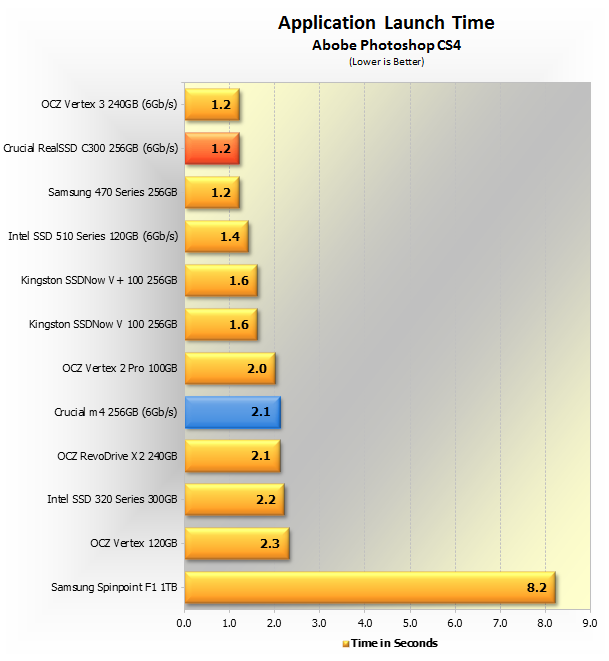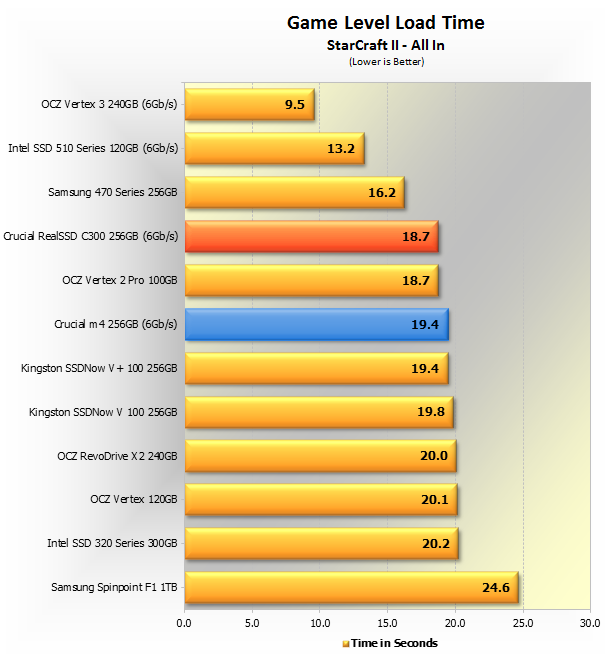Benchmarks: Real-World Applications

The Windows 7 boot time test is measured from the moment the OS loading screen appears to the time the Windows desktop is fully loaded. Crucial's m4 jumps into the 10-second bracket, beating the C300's time by 26%. While it fared 30% better than Intel's 320 and 510 Series, it couldn't quite exceed the Vertex 3's 8.8-second showing.

For the application load test, we launch the following applications on Windows' startup: Internet Explorer, Outlook 2007, Access 2007, Excel 2007, PowerPoint 2007, Publisher 2007, Word 2007 and Photoshop CS4. The test starts when the Windows 7 startup sound plays until the final application is loaded and accessible.
The m4's Windows 7 multitasking performance was typical for a high-speed SSD, taking just 5.3 seconds or 0.6 seconds longer than the fastest SSD we've tested. While this did make it 0.2 seconds slower than the RealSSD C300, the results are within our margin of error for this kind of test, which is conducted using a stopwatch.

This test measures the time it takes to launch Adobe Photoshop CS4. Whereas the fastest SSDs take just a second to load Photoshop CS4, we found that the Crucial m4 256GB took 2.1 seconds. In less relative terms, that's twice as slow as the RealSSD C300, Vertex 3 and Samsung 470 Series and on par with Intel's SSD 320 Series.

We recorded the above results while loading StarCraft II's single player campaign (starting when the loading screen appears and stopping once the "click to play" message appears). The m4 was slightly slower than the C300. With a load time of 19.4 seconds, it was also 47% slower than the 510 Series and twice as slow as the old Vertex 2.